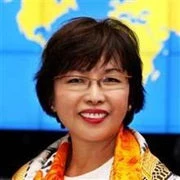This April marks the first anniversary of the World Bank’s Education Sector Strategy 2020, Learning for All: Investing in People’s Knowledge and Skills to Promote Development. Why Learning for All?
Because we simply cannot be indifferent to the large numbers of children in developing countries who do not get the chance to go to school, and who thus cannot count or read or put thoughts together—basic skills that are their ticket to a life without poverty.
Because we simply must commit ourselves to ensuring that all students—not just the most advantaged or the most gifted—acquire the knowledge and skills they need to end the intergenerational cycle of poverty and lead healthy, productive lives.
Reflecting back on this past year, it is clear that we are off to a robust start. We are helping remove the barriers that limit educational opportunities for girls and other disadvantaged children; developing and applying new tools to help countries improve their education systems and outcomes; and supporting countries to deliver the learning and skills necessary for all people to live healthy and productive lives.
The 2012 World Development Report, Gender Equality and Development, recognizes that gender equality is not only the right thing to do, but also the smart thing to do. Our companion piece to the report, Getting to Equal: Promoting Gender Equality through Human Development, highlights gaps in education for marginalized populations and details proven interventions that address equality.
Learning for All places equality in education as a priority, based on the belief that there are indisputable benefits to ensuring that girls and other disadvantaged populations have an equal opportunity to learn and excel—resulting in development and growth for households, communities, and nations alike.
Our education team is actively advancing this agenda. More than 25 education projects over the past year focused on disadvantaged children, and more than half of these projects aimed to increase girls’ opportunities to learn, through such measures as demand-side interventions including targeted scholarships and conditional cash transfers. In Mongolia and Bangladesh, project interventions are strengthening pre-primary education systems—particularly to expand access for girls and rural children. And in Afghanistan and Ethiopia, projects are enhancing the job skills of young women to prepare them to be competitive in the labor market.
There has been progress, but gender equality has not been fully or permanently achieved around the world. This is why we will continue to invest in girls and women, particularly early in life and in ways that are the most likely to benefit them, their families, and the societies in which they live. Partnerships and evidence-based interventions have an important role to play going forward.
Today, the World Bank’s Education and Gender Research Colloquium, Getting to Equal in Education: Addressing Gender and Multiple Sources of Disadvantage to Achieve Learning, will bring together leading researchers, thinkers, practitioners, and advocates to discuss interventions that can help address multiple sources of education disadvantage, with a focus on gender. This event reaffirms the World Bank’s commitment to gender equality and to reducing multiple sources of disadvantage.
Click here to watch a live webcast of the event and join the discussion on Twitter.



Join the Conversation